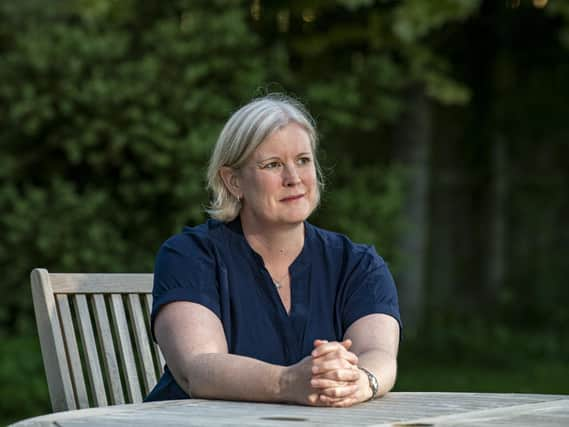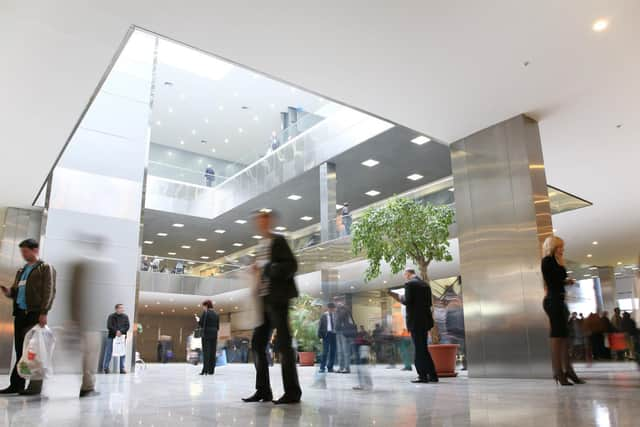Why good ventilation and air quality in our buildings will be important in the post-Covid world


They said the existing rules on ventilation were failing to stop infections, including Covid-19, with the problem likened to the health crisis caused by contaminated water in Britain’s cities in the 1800s.
The group of scientists and engineers said that while governments have regulations on the safety of food, sanitation and drinking water, there’s far less emphasis on pathogens in the air.
Advertisement
Hide AdAdvertisement
Hide AdAmong the authors was Cath Noakes, Professor of Environmental Engineering for Buildings at the University of Leeds, who is an expert on buildings and ventilation and the airborne transmission of infection.


Evidence shows that the coronavirus is often transmitted via infectious aerosols in crowded indoor spaces, which highlights the importance of good building ventilation. “We’ve known for years that transmission of infection can happen through the air and that ventilation matters for it,” says Prof Noakes who is part of Sage (Scientific Advisory Group for Emergencies) which advises the Government on viruses.
“When the 2003 Sars outbreak happened there was a focus on ventilation especially in the Far East. But because it never really happened here we didn’t really do anything. There was a little bit of focus around the 2009 influenza pandemic but again it didn’t quite take off enough to make people sit up and listen.
“What Covid has done is really make people recognise that there’s a strong relationship between the ventilation and the air in a building and your health.” There has been growing awareness about the impact of air pollution outside and now there’s increasing awareness that indoor air pollution matters, too.
Advertisement
Hide AdAdvertisement
Hide Ad“This has been creeping up the agenda and then suddenly we have this [a pandemic] and we think ‘hang on a minute, our air matters as much as clean water does.’”
In the past, many of us probably haven’t given indoor air quality a second thought, but Prof Noakes says this needs to change.
“Think how many days off sick people have and think of the cost of that to companies and to society. We treat ventilation as an energy cost and we try to limit it to reduce our energy consumption. And it’s right that we should consider energy consumption but we don’t think about the fact that the actions we take mean that we’ve created environments which not just make people sick but reduce their performance and reduce their productivity.
“There’s data all over the world that shows if you have good ventilation in your bedroom you sleep better at night and you perform better the next day. There’s data that shows in schools that have higher ventilation rates have lower sickness absence and higher test scores. So we’re creating environments that hold us all back.”
Advertisement
Hide AdAdvertisement
Hide AdProf Noakes says one of the problems is it’s harder to control air quality indoors. “You can control the water that comes out of your tap, it’s got a very defined source. But the air is invisible and hard to measure.”
When you get a disease outbreak associated with contaminated water you can usually identify it really quickly, it’s much harder when the problem is in the air.
So has Covid-19 changed the attitudes of policymakers? “I think it has raised awareness and raised the fact that actually we know very little about most of our buildings and how they behave. If somebody says to me what proportion of buildings in the UK are well ventilated, I have absolutely no idea. I could tell you there are plenty that aren’t,” she says.
“We have some information about homes and information about some schools because there’s been some research done into those. But we have almost no information about retail spaces and hospitality spaces.”
Advertisement
Hide AdAdvertisement
Hide AdThe challenge is making ventilation as good as it can be in our buildings, but there is no quick fix. “It’s not feasible to solve every problem overnight. The first step is awareness and for anyone who does own a building to think ‘how does the air get in and out?’ Then thinking through some sort of risk assessment and asking ‘what do I need to do to make sure air gets in and out of this building better?’”
This might be as simple as opening doors and windows more regularly or making sure extractor fans are used more frequently. “We also need to think about putting carbon dioxide monitoring in to look at whether ventilation is good or not, and whether we need professional assessments of some buildings to help advise on it.”
Any ventilation improvements would need to be energy efficient and would no doubt be costly and time consuming. Perhaps, then, we also need a radical rethink of how buildings are designed? “It’s not just about design because we have standards already, so there is something around compliance. You can’t guarantee a ventilation rate in a building, it’s not a precise number. But you can look at ballpark figures and whether a building fits in a range or whether it’s significantly below where it should be.”
The pandemic may lead to a change in the way our towns and cities are designed, too. “I hope this does allow us to think through different ways to make them better. We have a lot of towns and cities that are designed around cars, when can we actually design them around people and their needs?”
Advertisement
Hide AdAdvertisement
Hide AdWe are already seeing restaurants, cafes and bars, in particular, making greater use of outside space, and while the British weather is notoriously unpredictable it’s something that may be here to stay. “There are times when even covered outdoor spaces would work and this is part of what we need to think through to allow people to space out more.
“Over recent years the cost of building in cities has become higher and the cost of living in cities has become higher, we’ve focused on building accommodation in cities which are little apartments in big towering blocks where people are crammed together, and perhaps we need to rethink that.”
Prof Noakes also feels we need to be better prepared for a future pandemic. “In the past 20 years we had Sars, we had Mers, we had the 2009 flu pandemic and now this one. And with the other three we were lucky. We try to pretend these are one-in-a-100-year events. They aren’t. New strains of viruses come along with alarming regularity. So designing our environments better to make them more resilient is important. Even if it only helped cut transmission by 20 per cent that would still be a huge impact.”
Ultimately, she hopes the questions posed by the pandemic prompt positive change. “It’s a long-term question, but how do we put people and their health at the heart of design?”
Learning the legacy of past outbreaks
Advertisement
Hide AdAdvertisement
Hide AdPast pandemics and disease outbreaks have led to changes in the way buildings are designed to mitigate against future threats.
“If you go back to the 1918 influenza pandemic some of this has happened before, not so much in the UK but in the US,” says Prof Noakes.
“That prompted changes in building design, like changes in the design of radiators to allow people to heat their buildings while opening their windows.
“That’s not the right solution for today, because it’s not very energy efficient. But you do see the legacy of that pandemic on buildings.
“You see the legacy of Sars on buildings in the Far East, and how in places like Hong Kong they’ve changed the design of their hospitals because of it.”